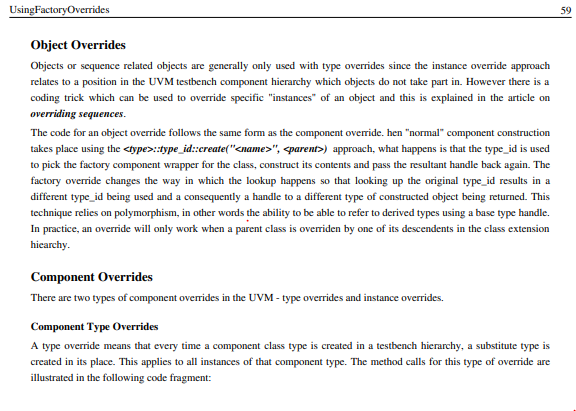Dear Verification Academy Team,
I appreciate the effort put into creating the UVM Cookbook, which has been an invaluable resource for the verification community. However, I came across a discrepancy in the section on Object Overrides.
The book states that “The code for an object override follows the same form as the component override,” and it provides an example where object creation is done using:
::type_id::create(“”, );
However, this is incorrect because, unlike components, objects do not require a parent during creation. The correct syntax for object creation should be:
::type_id::create(“”);
This is an important distinction, as many engineers refer to this cookbook as a primary learning resource. The current explanation may cause confusion or incorrect understanding of object overriding in UVM. I kindly request you to update the content with a proper explanation and corrected examples to maintain clarity and accuracy.
Thank you for your time and consideration. I appreciate your contributions to the verification community!

Best regards,
sai sambasiva gidaturi,
VLSI Verification Engineer